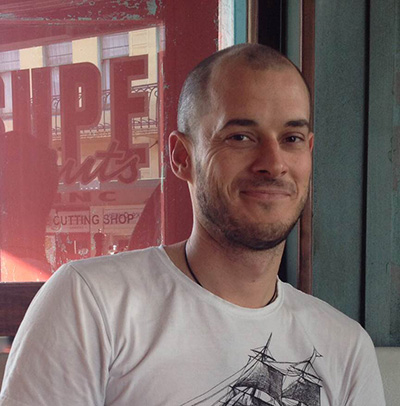Researching Their Stories
University of Auckland history graduate Jonathan Burgess reflects on his work researching the lives of Collegians from the Roll of Honour.
The brief amount of time that I spent researching Auckland University College students and staff in the Roll of Honour has given me considerable insight into how endlessly varied each person’s experience of First World War service was.
We are used to hearing stories of promising young men like Alan Wallace being killed before their time in Gallipoli. But we don’t often hear stories of the older men that enlisted, the men that served for the entire length of the war, the personnel of the YMCA, or the interminable tedium that was often part of the military experience. We’re also not as used to hearing about lives before or after the war.
It was a surprise to discover the soldiers that returned to New Zealand multiple times during the War, and often eye-opening to read about the injuries that men survived. My research also highlighted how often men were incapacitated by illness rather than wounds.
I find the Roll of Honour compelling as a memorial, and as a source, because it was handwritten, incomplete, and occasionally fallible. Knowing about the people who created the Roll, seeing their handwriting in its pages, and following them through the pages of The Kiwi added another dimension to using this document. I found it to be quite evocative of what was a considerably smaller, closer-knit, and less formalised institution than what the University of Auckland is now. It was also gratifying to see that the University’s student journalists have maintained a consistent tone for more than a hundred years.
The one case for which I seriously doubted the information in the Roll was that of D.S. Wylie. The Roll recorded the service details of David Storer Wylie, a surgeon with an impressive array of initials appended to his name, but it seemed unlikely that a surgeon who had been practising in New Plymouth since 1904 would be studying book keeping in Auckland in 1914. It seems like this was a case of mistaken initials, and the D.S. Wylie who attended AUC is most likely the one who turns up in First World War-era newspapers as a practising accountant and never served in the war.
The digitised First World War personnel records available through Archives New Zealand were a rich and valuable source. The personal details that showed up in the military records were often entertainingly specific — such as the exact position of fillings in soldier’s mouths — and the dispassionate recording of often quite gory injuries made for interesting reading. I’m sure Training College principal Herbert Milnes would have been happy to know that his former student Charles Southey’s heart rate had returned to its resting level within two minutes of undertaking exercise. Piecing together the haphazard information vacuumed up by the military bureaucracy into a narrative of an individual’s wartime experience made for enjoyable detective work.
The digitised newspapers available through Papers Past make so much detail from late-nineteenth and early-twentieth century New Zealand life so accessible it almost feels like cheating. Thankfully, I did occasionally get to feel like a real historian as I scrolled through the microfilm of later editions that have yet to be digitised.
I especially enjoyed glimpses of colour in the First World War. We are so used to seeing black and white images that it is quite striking to learn that Charles Southey’s eyes — staring into the lights in his quintessential Schmidt portrait — were blue, or that Dorothy Wilson was wearing delphinium blue when she married Robert McFarland. I enjoyed having the opportunity to infiltrate military history and include these details.
Finally, as I’m sure anyone who has spent time working with archives in reading rooms will appreciate, being able to work inside Special Collections and have direct access to the stacks was a bit of a dream come true. If only every project had this much rich information so easily at hand. I look forward to seeing what gets unearthed over the next four years.



